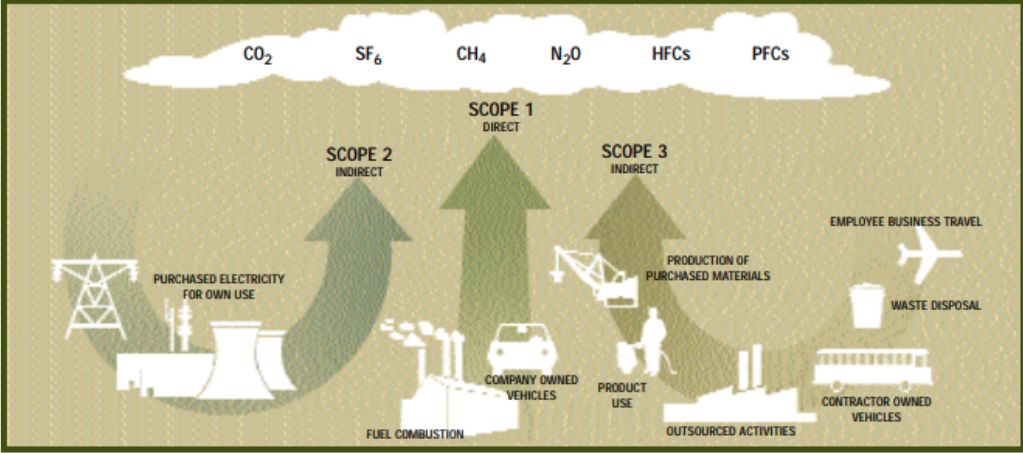Carbon Accounting 101: How to Measure the Carbon Footprint of Your Tourism Business or DMO
According to the Nature Climate Change journal, the tourism industry accounts for 8% of the world’s greenhouse gas emissions (GHGs). In keeping with science-based targets, that means that the tourism sector needs to reduce its carbon footprint by 50% by 2030 to become part of the solution to mitigate climate change. But is this even possible, and if so, where do we begin?
As the old saying goes, “what gets measured, gets managed”. The first step to figuring out where your carbon footprint is coming from is to measure your carbon footprint. From here, you can create an action plan to tackle the low-hanging fruit opportunities, many of which will come from your own operations and can also lead to cost savings.
That being said, if you have ideas for how to reduce your carbon footprint now, don’t delay taking action while you measure the impacts. If you can, do both.
Measuring your carbon footprint will require some time, an understanding of what data you need to collect, and ideally a simple online carbon calculator, such as EcoBase Carbon Software. You can also sign up for the TIAC “Pathway to Net Zero Workshop Series” where a GreenStep team member will guide you through all of these steps outlined below, you’ll receive a free subscription to EcoBase Carbon Software, and your business or destination will leave with a completed carbon footprint, reduction target, and action plan.
Creating a Baseline: How to Measure Your Emissions
Step 1: Set organizational and operational boundaries
The first step is to determine organizational and operational boundary, which tells you what should be included in your carbon footprint. For most businesses and destinations, this will include all of the buildings, vehicles, equipment, and land (i.e. for agritourism businesses) that you own or control. While destinations can also measure the carbon footprint of the geographic area they market, manage, or steward, this guidance is specific to the organizational carbon footprint, not the destination as a whole.
You will also need to determine the base year for which you plan to measure your carbon footprint. In many cases, this will be your last fiscal year.
Step 2: Determine Scope 1, 2 and 3 emissions sources within these boundaries
Based on the Greenhouse Gas Protocol, there are two categories of carbon emissions — direct and indirect. Direct emissions are generated by your organization’s activities (from equipment, buildings and other assets that you own or control), while indirect emissions are generated elsewhere in support of your business activities. These emissions are then categorized into Scope 1, 2 and 3.
- Scope 1 → Direct Emissions from sources owned or controlled by the company, such as using fuel for vehicles, natural gas for hot water and space heating, and refrigeration.
- Scope 2 → Indirect Emissions from the offsite generation of electricity, steam, heat or cooling purchased for consumption by the company.
- Scope 3 → Indirect Emissions are sources generated by another entity that is necessary for your organization to operate, such as business travel in non-company-owned vehicles, employee commuting, paper usage, waste disposal, and outsourced activities such as shipping, event management, etc.

Figure 1: Overview of scopes and emissions across a value chain.
The Greenhouse Gas Protocol: A Corporate Accounting and Reporting Standard. Revised Edition.
Step 3: Identify and collect data for each emissions source
There are 2 kinds of data needed to calculate GHG emissions — activity data and emissions factors. Activity data is a quantitative measurement of an activity that results in resources used that generate GHG emissions (e.g. liters of gasoline, or kilowatt hours of electricity). An emissions factor is a representative value (co-efficient) that converts activity data into GHG emissions generated. The equation used to calculate GHG emissions is:
Activity Data x Emissions Factors = GHG Emissions
Emissions factors for each type of activity can be researched online and the calculations done in a spreadsheet, or by using an online calculator, such as EcoBase Carbon Software, you can simply input the activity data, and the software will do the calculations for you. Once this step is complete, you will have determined your carbon footprint.
Step 4: Set reduction target and create a carbon reduction action plan
Setting a GHG reduction target is an effective way to begin building your plan of action, as it gives you goals to work towards. Reduction targets are considered ‘science-based’ if they are in line with what the latest climate science deems necessary to meet the goals of the Paris Agreement – which aims to limit warming to 1.5°C.
The general guidelines for setting a science-based reduction targets are as follows:
- Long-term target: 90 to 95% reduction in absolute emissions by 2050
- Mid-term target: 50% reduction in absolute emissions by 2030
- Short-term targets: 5% to 8% reduction per year between now and 2030
Small and mid-sized organizations (those with fewer than 500 employees) should focus first on achieving these targets for their Scope 1 and 2 emissions, while also committing to measuring and reducing Scope 3 emissions. With the targets in mind, look back at the areas that contributed to your carbon footprint and identify actions that can help you to reduce your carbon footprint, following the mitigation hierarchy:
- Avoid
- Reduce
- Replace
- Offset
Step 5: Report
The key elements of a Carbon Footprint Inventory Report are as follows:
- Description of company and inventory boundary
- Details of Scope 1, 2 and 3 activities included
- Reporting period covered
- Information on emissions: Total carbon footprint, intensity, and broken down by Scope 1, 2 and 3
- Emissions data by location (where appropriate)
- Year over year comparisons (after first year)
- Emissions reductions target (intensity and absolute), ideally science-based
- Emissions reduction action plan with timelines and progress on existing plan
Step 6: Implement reduction plan and offset (if desired)
Now it’s time to get to work implementing your carbon reduction action plan. Emissions that can’t be reduced in the short term can be neutralized by purchasing carbon offsets. A carbon offset is a transferable instrument (or credit) that represents a quantifiable reduction in a GHG emission – or alternatively, an increase in carbon storage (e.g., through land restoration or the planting of trees). Look for Gold Standard carbon offsets to ensure that they are credible.
Getting Started on Your Carbon Footprint
If you feel like you might need some support in measuring your carbon footprint, there are two great options:
- Register for the “Pathway to Net Zero” workshops being offered at no cost though TIAC, and delivered by GreenStep.
- Schedule a 30 minute free consultation with GreenStep to discuss your options for moving forward
Taking Further Action
If you are interested in joining the movement, and looking for support, accountability and inspiration, we encourage you to take part in the following industry initiatives:
Sustainable Tourism 2030 Pledge:
A commitment to improve the sustainability performance of your tourism business or destination between now and 2030.
Become a Signatory
Tourism Declares:
Tourism Declares exists to enable everyone in tourism to implement the Climate Action Plans needed to halve sector emissions by 2030.
Become a Signatory
Glasgow Declaration:
A commitment to a decade of tourism climate action.
Become a Signatory


